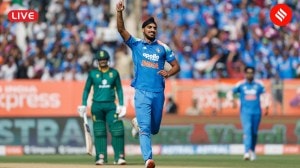
Biden, who has visited India multiple times in different capacities, was keen to have a visit that takes the India-US story forward building on Prime Minister Narendra Modi’s visit to Washington DC in June for the state visit.
Normally, bilateral visits are not included during the G20 summits — but India has made an exception for the US President and the Saudi Crown Prince.
India and the US are hoping to iron out the differences over the nuclear deal which cropped up after the civil nuclear liability law and the two sides hope to seal an agreement or an understanding to set up small nuclear reactors — seen as easier than going for more capital intensive large reactors.
In June, both sides had discussed negotiations between the Nuclear Power Corporation of India Limited (NPCIL) and Westinghouse Electric Company (WEC) for the construction of six nuclear reactors in India. And now the discussion on developing next generation small modular reactor technologies is in top gear now, which are meant for domestic market as well as for export to third countries.
The two sides are also working towards fast-tracking the GE jet engines deal that was agreed upon in the June visit, after signing of a pact between General Electric and Hindustan Aeronautics Limited for the manufacture of GE F-414 jet engines in India for the Hindustan Aeronautics Limited Light Combat Aircraft Mk 2. After the US Congress last week approved the deal that will enable a higher level of transfer of US jet engine technology than ever, the two sides are working to expedite the conclusion of this deal.
Story continues below this ad
Besides the GE jet engine deal, the two sides are also negotiating a “Security of Supply arrangement” and a “Reciprocal Defense Procurement agreement”.
After India conveyed its plans to procure General Atomics MQ-9B HALE UAVs — highly powerful drones — the two sides are discussing a plan that General Atomics will also establish a Comprehensive Global MRO facility. A concrete announcement is expected during the visit as well.
The two sides are also working towards announcing academic programmes tailored for Indian students, where STEM courses will be offered for a year-long Master’s degree with a specialisation in a particular industry. After the programme, the students will have the option of staying in the US for up to three years and work there.
Washington and New Delhi, which have differed on their criticism of the Russian invasion of Ukraine, are also considering sending in joint aid to Ukraine.
Story continues below this ad
India has so far sent in about 100 tons of humanitarian aid, which included essential medicines, medical equipment, blankets, tents, food, and the latest tranche was delivered by the Indian ambassador in Kyiv to Zaporizhzhia (where the nuclear plant is located) last month.
While Washington has so far sent in lethal weapons and India has only sent humanitarian aid, a joint humanitarian aid is being considered as a message to Moscow. But the proposal is yet to be finalised.
As the two sides had decided to launch a pilot to adjudicate domestic renewals of certain petition-based temporary work visas later this year, a firm launch date is also expected to be finalised and announced during the US President’s visit.
This will be a major boost for Indian nationals who are H1-B visa holders, and the idea is to expand this facility to other categories as well.
Story continues below this ad
The two sides will also start work on new US consulates in Bengaluru and Ahmedabad, and an Indian consulate in Seattle for later this year. An announcement of two new consulates in the US is expected as well.









